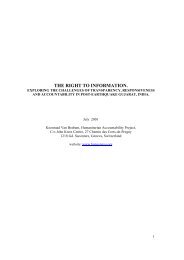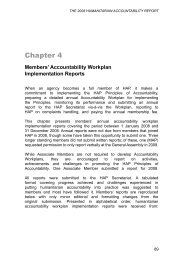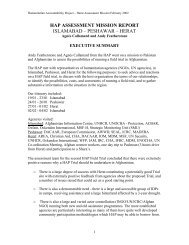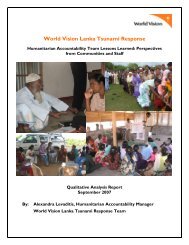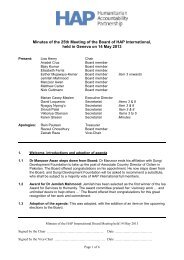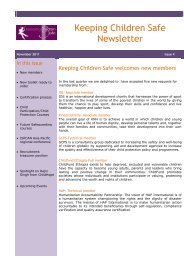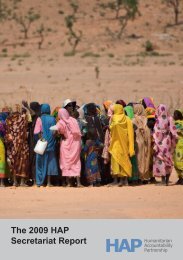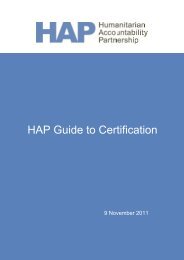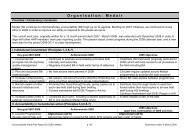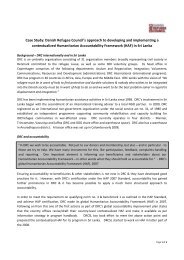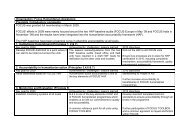Disaster Preparedness Program Case Study ... - HAP International
Disaster Preparedness Program Case Study ... - HAP International
Disaster Preparedness Program Case Study ... - HAP International
Create successful ePaper yourself
Turn your PDF publications into a flip-book with our unique Google optimized e-Paper software.
The Way Forward<br />
The initial results of the <strong>Disaster</strong> <strong>Preparedness</strong><br />
<strong>Program</strong> have been very positive and they<br />
have reinforced the need to continue to<br />
support the capacity building of humanitarian<br />
staff in Myanmar. As previously stated, the<br />
program is targeting 480 humanitarian staff<br />
working on the Cyclone Nargis response,<br />
however the learning needs of humanitarian<br />
staff in Myanmar remain far greater than what<br />
the current funded project (until October 2009)<br />
can address.<br />
Project staff are currently exploring<br />
opportunities to increase the reach of the<br />
<strong>Disaster</strong> <strong>Preparedness</strong> <strong>Program</strong> through a<br />
variety of means, such as:<br />
• Providing Training-of-Trainer (ToT)<br />
sessions and encouraging organizations to<br />
offer the program to their own staff<br />
• Promoting the program among nonemergency<br />
staff, as well as organizations<br />
and programs in other parts of Myanmar<br />
(outside the cyclone-affected area)<br />
• Establishing linkages with regional and<br />
international organizations and capacity<br />
building initiatives to adapt the materials<br />
and resources for other contexts and<br />
languages<br />
Following the experience of Cyclone Nargis,<br />
civil society organizations in Myanmar have<br />
noted that “staff feel more motivated to work<br />
when they feel confident about their skills and<br />
knowledge in doing the job” 4 and training<br />
sessions have been an integral way in which<br />
to enable staff to build their “sense of<br />
confidence in themselves”. They have also<br />
highlighted a significant need for capacity<br />
building and see external organizations as<br />
being well placed to assist. Through<br />
continued inter-agency collaboration and<br />
stakeholder engagement it is hoped that the<br />
<strong>Disaster</strong> <strong>Preparedness</strong> <strong>Program</strong> will continue<br />
to support the continuous learning of staff and<br />
the development of the humanitarian sector in<br />
Myanmar.<br />
4 Centre for Peace & Conflict Studies (Cambodia),<br />
Listening to Voices from Inside: Myanmar Civil<br />
Society’s Response to Cyclone Nargis, 2009<br />
<strong>Disaster</strong> <strong>Preparedness</strong> <strong>Program</strong> in Action<br />
Save the Children in Myanmar’s Human<br />
Resources Department is developing a<br />
new staff induction process that will utilize<br />
the self-study workbook and a customized<br />
version of the workshop, to employ a<br />
minimum competency in disaster<br />
preparedness for all country staff.<br />
<strong>Program</strong> participant receiving certificate<br />
For more information on the <strong>Disaster</strong><br />
<strong>Preparedness</strong> <strong>Program</strong>, please contact:<br />
Thanda Kyaw<br />
Learning & Development Manager<br />
<strong>Disaster</strong> Response & Resilience Learning<br />
Project<br />
Save the Children in Myanmar<br />
Email: tdkyaw@savechildren.org.mm<br />
Phone: +95-1-536 732, 537 092 x.106, 107<br />
7




